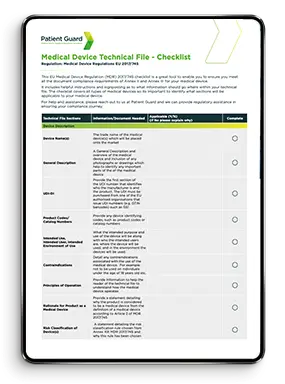PPE Regulation
In the European Union (EU), the sale and use of Personal Protective Equipment is strictly controlled under Regulation (EU) 2016/425. This regulation ensures that only safe, high-quality PPE reaches the market. For many businesses, understanding these rules can be a challenge—especially if you’re new to regulatory compliance.
In this beginner’s guide, we break down the essentials of EU PPE regulation. We explain what PPE is, how it is classified, what the regulatory requirements are, and how you can ensure your products meet EU standards.
What is Personal Protective Equipment (PPE)?
Personal Protective Equipment (PPE) refers to any device or product worn or held by a person to protect against health or safety risks. PPE helps prevent injuries or illnesses caused by exposure to physical, chemical, biological, mechanical, or thermal hazards.
Examples of PPE
Safety helmets
Respiratory protective equipment (e.g. face masks and respirators)
Protective gloves
Safety goggles and face shields
Hearing protection
High-visibility clothing
Safety boots
Protective suits and aprons
PPE is widely used in sectors such as:
Healthcare (e.g. infection control)
Construction (e.g. hard hats, boots)
Chemical processing (e.g. gloves, full-body suits)
Food production (e.g. hygiene garments)

Why Is PPE Regulated in the EU?
Regulation of PPE in the EU ensures that products provide a consistent and adequate level of protection to users. Poorly designed or manufactured PPE can create a false sense of security and expose users to serious harm.
The EU regulatory framework helps:
Ensure product safety and performance
Harmonise standards across EU Member States
Facilitate free movement of compliant products within the EU market
Protect end-users and frontline workers
The Legal Framework: Regulation (EU) 2016/425
The primary law governing PPE in Europe is Regulation (EU) 2016/425 on personal protective equipment. This regulation replaced the older Directive 89/686/EEC and became fully applicable from 21 April 2018.
This regulation applies to:
Manufacturers of PPE
Importers bringing PPE into the EU
Distributors selling PPE in the EU
Authorised Representatives acting on behalf of non-EU manufacturers
The regulation outlines requirements for product design, safety, conformity assessment, technical documentation, and CE marking.
Three PPE Categories Under the EU PPE Regulation
Regulation (EU) 2016/425 classifies PPE into three categories, based on the level of risk the equipment is intended to protect against.
Category I – Simple PPE
Covers PPE for minimal risks, where users can assess the level of protection themselves. Examples include:
Gardening gloves
Sunglasses (non-prescription)
Washing-up gloves
Manufacturers can self-declare conformity for Category I PPE. No Notified Body involvement is required.
Category II – Intermediate PPE
Applies to PPE that does not fall into Categories I or III. These are items that protect against moderate risks and require independent assessment. Examples include:
High-visibility clothing
Safety goggles
Industrial helmets
A Notified Body must carry out an EU Type Examination for Category II products.
Category III – Complex PPE
Includes PPE designed to protect against serious or fatal risks, where the effects are irreversible or life-threatening. Examples include:
Respirators and FFP3 masks
Chemical-resistant suits
Fall protection harnesses
PPE for use in extremely high or low temperatures
These products require EU Type Examination and ongoing surveillance, such as audits or sample testing, by a Notified Body.
CE Marking for PPE
All PPE products must carry the CE mark to be legally placed on the EU market. The CE mark shows that the PPE complies with the safety, performance, and design requirements of Regulation (EU) 2016/425.
Steps to Achieve CE Marking:
Classify the PPE into Category I, II, or III
Conduct a risk assessment for intended use
Identify applicable harmonised standards
Compile a Technical Documentation File
Create an EU Declaration of Conformity (DoC)
Undergo Notified Body review (for Categories II and III)
Affix the CE mark to the product and packaging
The Declaration of Conformity must be available to authorities and customers upon request. It should be translated into the official languages of the countries where the product is sold.
The Role of Harmonised Standards
Harmonised standards are EU-recognised technical standards that provide a “presumption of conformity” with legal requirements. Using these standards simplifies the CE marking process and helps manufacturers demonstrate compliance.
Common harmonised standards for PPE include:
EN 149 for respiratory masks
EN 166 for eye protection
EN ISO 13688 for protective clothing general requirements
EN 388 for protective gloves against mechanical risks
Using the most up-to-date standards is essential, as old or withdrawn versions may not be accepted by Notified Bodies.
Responsibilities of Economic Operators
Manufacturer Responsibilities:
Design PPE to meet essential safety requirements
Ensure conformity assessment is performed
Maintain technical documentation for at least 10 years
Affix CE marking and label the product properly
Provide user instructions and safety information
Implement post-market monitoring
Importer Responsibilities:
Ensure non-EU PPE complies with EU regulations
Verify CE marking and documentation exist
Keep a copy of the DoC
Ensure labelling and language requirements are met
Cooperate with market surveillance authorities
Distributor Responsibilities:
Confirm the PPE is CE marked and has correct documentation
Store and transport PPE in safe conditions
Act if there is any risk to health and safety
What Is a Notified Body?
A Notified Body is an independent organisation designated by an EU Member State to perform conformity assessments. They carry out testing, review technical files, and conduct audits where required by law.
You can find a full list of PPE Notified Bodies on the European Commission’s NANDO database.
For Category II and III PPE, working with a competent and experienced Notified Body is essential.
How to Prepare a Technical File for PPE
The technical documentation must demonstrate that the product complies with Regulation (EU) 2016/425. It should include:
General description of the product
Risk assessment
List of applied harmonised standards
Design and manufacturing drawings
Test reports
Instructions for use
EU Declaration of Conformity
Notified Body certificates (if applicable)
This file must be kept available for at least 10 years after the last unit is placed on the market.
Common Pitfalls in PPE Compliance
New manufacturers or importers often run into the same issues. Here are some common mistakes to avoid:
Incorrect classification of PPE category
Outdated standards used in testing
Missing technical documentation or Declaration of Conformity
Incomplete user instructions or lack of required translations
Assuming CE marking is optional for certain products
Non-compliance can result in product recalls, fines, or a ban from the EU market.
How Patient Guard Can Help
At Patient Guard, we support businesses across the EU and UK in achieving compliance with PPE regulations. Whether you’re a new manufacturer or an established importer, we can help with:
- EU Authorised Representative
- UK Authorised Representative
Frequently Asked Questions (FAQs)
Regulation (EU) 2016/425 is the main EU law that sets the rules for Personal Protective Equipment (PPE). It covers the design, manufacture, testing, and sale of PPE in the European market. It applies to all manufacturers, importers, and distributors of PPE and replaced the older PPE Directive 89/686/EEC in 2018.
Yes. All PPE sold in the EU must be CE marked to show that it meets the essential safety and performance requirements under Regulation (EU) 2016/425. The CE mark must be visible on the product, its packaging, or the instructions. For higher-risk PPE (Categories II and III), certification from a Notified Body is also required.
A Notified Body is an independent organisation authorised by an EU country to carry out conformity assessments. You need to involve a Notified Body if your PPE falls under Category II or Category III. They review your technical file, test results, and may conduct audits to ensure compliance before issuing the necessary certificate.
No. All PPE, regardless of where it’s made, must comply with Regulation (EU) 2016/425 to be sold in the EU. That includes CE marking, proper documentation, and translated instructions. If you’re importing PPE into the EU, you must ensure it meets all requirements before placing it on the market.
Summary
Navigating EU PPE regulation may seem overwhelming at first, but understanding the basics can help you take the right steps. Compliance with Regulation (EU) 2016/425 ensures that your PPE products are safe, legal, and trusted by users throughout Europe.
If you’re placing PPE on the EU market, it’s your responsibility to ensure the product is:
Properly classified
Conformity assessed
CE marked
Supported by technical documentation
Accompanied by clear, local-language instructions
Need help meeting PPE compliance requirements? Let Patient Guard guide you through the process.




